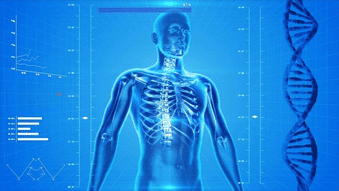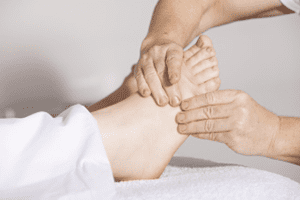Introduction to Remote Therapeutic Monitoring
Overview and definition of remote therapeutic monitoring (RTM)
Remote therapeutic monitoring (RTM) is an innovative healthcare approach that enables healthcare providers to remotely monitor and manage patients’ health conditions. This technology leverages wearable medical devices and remote patient monitoring systems to collect patient data and analyze it to make informed decisions regarding treatment plans and adjustments.
Importance and relevance in modern healthcare
The growing adoption of RTM in modern healthcare is driven by several factors, including an aging population, the prevalence of chronic diseases, and the need for more efficient, patient-centered care. By understanding remote therapeutic monitoring, healthcare providers can improve patient outcomes by closely monitoring therapy adherence and adjusting treatment plans based on real-time data.
RTM is particularly useful for managing chronic conditions, such as musculoskeletal and respiratory disorders, where continuous monitoring and timely intervention can make a significant difference in patients’ quality of life. For example, physical therapists can use RTM to monitor patients’ progress and make necessary adjustments to their rehabilitation programs, while occupational therapists and clinical social workers can use it to support patients with mental health and behavioral health issues.
RTM allows for better patient engagement and education, empowering patients to take a more active role in their care and fostering stronger relationships with their healthcare providers.
Remote therapeutic monitoring represents a significant shift in healthcare delivery, with the potential to revolutionize patient care and improve outcomes across a wide range of medical disciplines.
Evolution and Development of RTM
Historical context and the transition from traditional patient care to telehealth
The evolution of remote therapeutic monitoring (RTM) can be traced back to the broader transition from traditional patient care to telehealth. As healthcare systems around the world faced growing demands for more accessible, cost-effective, and personalized care, telehealth emerged as a promising solution. Telehealth encompasses various technologies and services that enable remote patient care, including remote patient monitoring, which laid the foundation for the development of RTM.
RTM builds on the principles of remote patient monitoring, focusing specifically on the management of therapeutic interventions for patients with chronic conditions. The introduction of new RTM codes by the American Medical Association (AMA) has facilitated the adoption of RTM in clinical practice, recognizing its value in improving patient outcomes and reducing healthcare costs.
Technological advancements enabling RTM
The growth and development of RTM have been made possible by significant technological advancements in recent years. The widespread adoption of smartphones, high-speed internet, and cloud computing has created a robust infrastructure for remote monitoring and data management.
Advancements in medical devices, including wearable sensors and connected health tools, have enabled healthcare providers to collect real-time data on patients’ physiological and non-physiological parameters. This data can be used to monitor patients’ respiratory system status and musculoskeletal system status, among other vital health indicators.
In addition, advances in data analytics and machine learning have facilitated the development of sophisticated algorithms capable of detecting patterns and predicting outcomes, further enhancing the value of RTM in patient care. These technologies allow healthcare providers to remotely monitor patients’ therapy adherence and therapy response, enabling timely interventions and personalized care.
Overall, the evolution and development of RTM have been driven by the convergence of telehealth, technological advancements, and a growing demand for patient-centered care. As the field continues to evolve, RTM is poised to become an integral component of modern healthcare, providing patients and healthcare providers with valuable insights and tools to improve health outcomes and enhance the quality of care.
Key Components of RTM
Wearable medical devices and sensors
One of the fundamental elements of remote therapeutic monitoring (RTM) is the use of wearable medical devices and sensors. These devices collect real-time data on various physiological parameters such as blood pressure, heart rate, and oxygen saturation, as well as non-physiological data, such as activity levels and sleep patterns. Wearable devices can also help monitor respiratory system status and musculoskeletal system status, providing healthcare providers with valuable insights into patients’ health and well-being.
Data transmission and storage
Another critical component of RTM is the secure transmission and storage of patient data. This involves using robust remote monitoring technologies that enable healthcare providers to access and analyze patient data remotely. Cloud-based platforms offer a scalable and secure solution for data storage, ensuring patient privacy and compliance with relevant data protection regulations.
Analytics and decision-making tools
The final key component of RTM is the use of advanced analytics and decision-making tools that enable healthcare providers to make informed decisions based on the data collected from wearable devices. These tools often incorporate machine learning algorithms that can detect patterns, predict outcomes, and provide personalized recommendations for treatment adjustments.
By analyzing data from wearable devices, healthcare providers can monitor patients’ therapy adherence and therapy response, allowing for timely interventions and adjustments to treatment plans. This personalized approach leads to better patient outcomes and improved overall health for individuals with chronic conditions.
The key components of RTM include wearable medical devices and sensors, secure data transmission and storage, and advanced analytics and decision-making tools. Together, these elements enable healthcare providers to offer remote, personalized care that can lead to improved patient outcomes, particularly for those with chronic musculoskeletal and respiratory conditions. As RTM continues to evolve and gain traction in the healthcare industry, its benefits will become increasingly apparent, ultimately transforming how patients and providers manage chronic health conditions.
Applications of RTM in Various Healthcare Settings
Physical therapy and rehabilitation
Remote therapeutic monitoring (RTM) has proven to be a valuable tool in the field of physical therapy and rehabilitation. By using wearable medical devices and sensors, physical therapists can monitor patients’ progress remotely, enabling them to provide more personalized care and adapt treatment plans as needed. This technology also allows patients to receive real-time feedback on their performance, improving therapy adherence and overall outcomes. The use of RTM in physical therapy and rehabilitation has been particularly effective for patients with musculoskeletal conditions and those recovering from injuries or surgeries.
Respiratory and cardiac care
In the realm of respiratory and cardiac care, RTM offers a way to monitor patients’ respiratory system status and heart function remotely. Wearable devices can track vital signs such as oxygen saturation, heart rate, and blood pressure, allowing healthcare providers to monitor patients with chronic conditions such as asthma, COPD, and heart failure. This real-time data enables healthcare providers to intervene quickly if a patient’s condition worsens, reducing the risk of complications and hospitalizations. Moreover, RTM can improve patient engagement and self-management, leading to better overall health outcomes.
Mental health and behavioral health services
RTM has also shown promise in the fields of mental health and behavioral health services. Clinical social workers, psychologists, and other mental health professionals can use RTM to collect self-reported data on patients’ mood, stress levels, and other indicators of mental well-being. Wearable devices can also monitor physiological markers of stress, such as heart rate variability and cortisol levels. This data can help healthcare providers identify patterns, predict relapses, and adjust treatment plans accordingly. Furthermore, RTM can enhance patient-provider communication and enable more timely interventions for individuals with mental health conditions, improving patient outcomes and overall well-being.
In conclusion, remote therapeutic monitoring offers a wide range of applications in various healthcare settings, including physical therapy, respiratory and cardiac care, and mental health services. By providing healthcare providers with real-time patient data, RTM enables more personalized care and timely interventions, leading to better patient outcomes and improved overall health.
Regulatory and Reimbursement Landscape
Remote therapeutic monitoring codes (RTM codes) and CPT codes
The American Medical Association (AMA) has introduced new CPT codes for remote therapeutic monitoring services to ensure that healthcare providers are properly reimbursed for the care they deliver using RTM technology. These RTM codes cover the initial setup, patient education, and ongoing monitoring and treatment management provided by eligible qualified healthcare professionals, such as physicians, nurse practitioners, and physician assistants.
These codes emphasize the importance of interactive communication between healthcare providers and patients, as well as the collection of non-physiological data, such as self-reported data on medication adherence and patient feedback. The introduction of these new CPT codes highlights the growing recognition of the value and effectiveness of remote therapeutic monitoring in improving patient outcomes and reducing healthcare costs.
Medicaid and private payer policies
The Medicaid program recognizes the importance of remote therapeutic monitoring and has implemented policies to cover these services for eligible beneficiaries. Each state’s Medicaid program determines the specific coverage and reimbursement policies for RTM services, which may vary based on the type of healthcare professional providing the service, the medical condition being monitored, and other factors.
Private insurance payers are also increasingly covering remote therapeutic monitoring services, recognizing the potential benefits of RTM in improving patient care and reducing overall healthcare costs. However, coverage policies and reimbursement rates can vary significantly between private payers, and healthcare providers should be aware of the specific remote therapeutic monitoring services covered by each payer.
It is crucial for healthcare providers to stay informed about the evolving regulatory and reimbursement landscape for remote therapeutic monitoring to ensure they are properly reimbursed for the care they deliver using this technology. As RTM becomes more widely adopted and its benefits become increasingly apparent, it is likely that more payers will cover these services, making them more accessible to patients and further enhancing their potential to improve patient outcomes and reduce healthcare costs.
The regulatory and reimbursement landscape for remote therapeutic monitoring is evolving as the technology becomes more widely recognized and adopted. With the introduction of new CPT codes and the increasing coverage of RTM services by both Medicaid and private payers, healthcare providers can expect to see a growing acknowledgment of the value and importance of this technology in modern healthcare.
Challenges and Limitations of RTM
While remote therapeutic monitoring offers numerous benefits, there are several challenges and limitations to consider when implementing this technology in healthcare settings.
Data privacy and security concerns
As with any technology that collects and transmits sensitive patient data, data privacy and security concerns are paramount in RTM. Healthcare providers must ensure that the systems used to collect, store, and transmit data adhere to strict security protocols to protect against unauthorized access and data breaches. Compliance with regulations such as HIPAA is crucial to safeguard patient privacy and maintain trust.
Patient engagement and adherence
Successful remote therapeutic monitoring relies on consistent patient engagement and adherence to prescribed therapies. This can be particularly challenging for patients who may struggle with technology or lack motivation to participate in their care. Healthcare providers need to offer patient education and support to encourage patients to actively engage in their treatment plans and adhere to therapy recommendations.
Additionally, providers should emphasize the importance of patient feedback and open communication to promote better outcomes.
Technological barriers and access
Technological barriers can limit the implementation and effectiveness of remote therapeutic monitoring. Patients in rural or underserved areas may have limited access to high-speed internet or reliable cellular networks, hindering the transmission of data between patients and healthcare providers. The digital divide can also create disparities in access to remote monitoring technologies, potentially exacerbating existing health inequities.
Moreover, the integration of different medical devices and software systems can pose challenges in ensuring seamless data collection and analysis. Healthcare providers need to invest in robust healthcare IT infrastructure to facilitate efficient data transmission and interoperability between systems.
While remote therapeutic monitoring holds significant promise for improving patient care and outcomes, healthcare providers must address the challenges and limitations associated with data privacy, patient engagement, and technological barriers. By addressing these concerns and investing in the necessary infrastructure and support, providers can harness the full potential of RTM to enhance patient care and ultimately improve the health of their patient populations.
The Future of RTM

As remote therapeutic monitoring continues to evolve, it is important to consider the emerging technologies, expanding applications, and policy changes that will shape the future of RTM.
Emerging technologies and innovations
Innovative technologies are poised to revolutionize the way remote therapeutic monitoring is conducted. For instance, advancements in wearable devices and sensors will enable more accurate and continuous data collection, improving the quality and utility of the information gathered. Furthermore, the integration of artificial intelligence (AI) and machine learning algorithms into RTM systems can improve the analysis and interpretation of patient data, enabling personalized care and early intervention when needed.
Expanding applications and integration with other care models
As remote therapeutic monitoring gains traction, its applications are likely to expand across various healthcare settings and disciplines. Integration with other care models, such as telehealth and care management services, will create a more comprehensive and efficient approach to patient care. This will allow healthcare providers to address the needs of diverse patient populations, including individuals with chronic conditions, mental health issues, and those requiring rehabilitation services.
Policy changes and evolving reimbursement landscape
The future of RTM will also be influenced by policy changes and the evolving reimbursement landscape. As remote monitoring becomes more widely adopted, regulatory bodies like the American Medical Association (AMA) will need to keep pace by updating codes and policies to reflect new technologies and applications. The introduction of new RTM codes and the increasing recognition of remote therapeutic monitoring services by Medicaid and private payers will play a critical role in fostering widespread adoption of RTM and ensuring its financial sustainability for healthcare providers.
In summary, the future of remote therapeutic monitoring is promising, with emerging technologies, expanding applications, and policy changes set to drive further advancements in this field. By embracing these developments and working collaboratively to address the challenges and limitations, healthcare providers can harness the power of RTM to improve patient outcomes and transform the way care is delivered.
Best Practices for Implementing RTM
To ensure the successful implementation of remote therapeutic monitoring, healthcare providers should focus on two key factors: training and education for staff, and adopting a multidisciplinary approach that encourages collaboration among professionals.
Training and education for healthcare providers
As with any new technology or practice, training and education are essential for healthcare providers to understand and effectively use RTM. This includes familiarizing themselves with the medical devices and software platforms involved, as well as staying up to date with the latest RTM codes and best practices for remote patient monitoring. By investing in proper training and ongoing education, healthcare providers can ensure they are well-equipped to deliver high-quality care through remote therapeutic monitoring services.
Multidisciplinary approach and collaboration
Another crucial aspect of successful RTM implementation is fostering a multidisciplinary approach and collaboration among healthcare professionals. This means integrating remote therapeutic monitoring into existing care models and ensuring that all relevant providers, such as physical therapists, occupational therapists, and clinical social workers, are involved in the process. By working together, these professionals can provide a comprehensive and coordinated approach to patient care, improving outcomes and ensuring patients receive the right support at the right time.
Moreover, a collaborative approach also extends to involving patients in their own care. Encouraging patient engagement and providing them with the necessary education and support can improve therapy adherence, self-management, and overall satisfaction with remote therapeutic monitoring services.
In conclusion, to successfully implement remote therapeutic monitoring, healthcare providers should invest in proper training and education for their staff and foster a multidisciplinary approach that encourages collaboration among professionals. By doing so, they can ensure the effective delivery of remote therapeutic monitoring services, leading to improved patient outcomes and a more efficient healthcare system.
Improving Patient Outcomes with RTM
Remote therapeutic monitoring (RTM) has the potential to significantly enhance patient outcomes across various healthcare settings. By closely monitoring therapy response, ensuring treatment adherence, and supporting self-management and patient education, RTM can lead to better health outcomes for patients and improve overall healthcare delivery.
Role of RTM in enhancing patient outcomes
One of the primary goals of RTM is to facilitate the collection of patient data and use this information to make informed decisions about patient care. By remotely monitoring patients’ musculoskeletal and respiratory conditions, healthcare providers can quickly identify any changes in a patient’s condition and adjust treatment plans accordingly. This proactive approach can lead to better patient outcomes and reduce the need for emergency interventions or hospitalizations.
Monitoring therapy response and treatment adherence
Remote therapeutic monitoring allows healthcare providers to track a patient’s therapy response and ensure they are adhering to their prescribed treatment plans. For example, physical therapists can monitor musculoskeletal system status, while respiratory therapists can monitor respiratory system status remotely. By keeping a close eye on patients’ progress and adherence, providers can make timely adjustments to treatment plans, resulting in more effective therapy and improved patient outcomes.
Supporting self-management and patient education
RTM also plays a crucial role in promoting patient engagement and self-management. Through patient education, individuals can better understand their conditions and the importance of adhering to their treatment plans. RTM enables healthcare providers to offer personalized guidance and support, empowering patients to take control of their health and actively participate in their care.
Moreover, RTM can support medication adherence by monitoring a patient’s medication-taking behavior and providing timely reminders. This can lead to improved therapy adherence and better health outcomes, particularly for patients with chronic conditions who require long-term medication management.
In conclusion, remote therapeutic monitoring has the potential to significantly improve patient outcomes by closely monitoring therapy response, ensuring treatment adherence, and supporting self-management and patient education. As RTM continues to evolve and integrate with other care models, its impact on healthcare delivery and patient outcomes is expected to grow. By adopting RTM, healthcare providers can offer more personalized and proactive care, leading to better health outcomes and a more efficient healthcare system.
Case Studies and Success Stories
The successful implementation of remote therapeutic monitoring (RTM) in various healthcare settings highlights its potential to improve patient outcomes and healthcare delivery. This section presents real-world examples of RTM success stories and offers key takeaways for healthcare providers.
Real-world examples of successful RTM implementation
- Reducing hospital readmissions for heart failure patients: A study found that remote patient monitoring, an essential component of RTM, significantly reduced hospital readmissions for heart failure patients. The intervention group experienced a 50% reduction in hospital readmissions within 30 days compared to the control group. This demonstrates the potential of RTM to improve patient outcomes and reduce healthcare costs.
- Improving outcomes in chronic obstructive pulmonary disease (COPD): Telehealth intervention for COPD patients has shown to improve health outcomes by allowing healthcare providers to monitor respiratory system status remotely. The intervention group experienced fewer hospitalizations, shorter hospital stays, and better self-reported quality of life compared to the control group.
- Enhancing physical therapy adherence and outcomes: A pilot study involving patients with knee osteoarthritis demonstrated that a tele-rehabilitation program, incorporating remote monitoring of therapy adherence and progress, led to improved patient outcomes. Patients in the intervention group reported higher satisfaction with their treatment, better adherence to their exercise program, and significant improvements in pain and function.
Lessons learned and key takeaways for healthcare providers
- Leverage technology to enhance patient engagement: RTM can empower patients to take an active role in their healthcare by providing them with the necessary tools and resources to monitor their conditions and adhere to their treatment plans. Healthcare providers should leverage technology to improve patient engagement and promote self-management.
- Collaborate with multidisciplinary teams: Successful RTM implementation often requires a multidisciplinary approach and collaboration among healthcare providers. Physical therapists, occupational therapists, nurse practitioners, and physician assistants should work together to develop comprehensive care plans and coordinate the delivery of RTM services.
- Invest in training and education: Healthcare providers should invest in training and education to ensure that they can effectively implement RTM in their practice. This includes understanding the technology, mastering remote monitoring tools, and staying up-to-date with the latest advancements in RTM.
- Tailor RTM to individual patient needs: Healthcare providers should customize RTM services based on individual patient needs, taking into consideration their specific conditions, treatment goals, and preferences. This personalized approach can lead to better patient outcomes and higher patient satisfaction.
These success stories and lessons learned demonstrate the potential of remote therapeutic monitoring to improve patient outcomes, reduce healthcare costs, and enhance the overall quality of care. By adopting RTM, healthcare providers can offer more personalized and proactive care, ultimately leading to better health outcomes for their patients.









